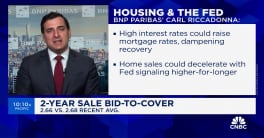Ignoring a higher CPI report, U.S. fixed income markets took worse-than-expected jobless claims figures at face value on Thursday, with bonds increasing on the arguably soft data.
Initial claims for unemployment benefits in the United States dropped back slightly to 450K in the week ending Aug. 9, but forecasts were for initial claims to fall to 435k this week, following last week's upwardly revised reading of 460k.
The 30-year bond is up 15 ticks to 116-17.5, increasing 21 ticks to 116-20 session highs after initially falling 7.75 ticks when the seasonally adjusted U.S. CPI rose more than expected on both fronts, as the core rate ticked up 0.3% in July, contributing to a 2.5% year-over-year change. Total inflation rose 0.8% in the month and 5.6% on the year. The consensus was looking for a 0.2% gain in the core and a 0.4% rise in total inflation.
Moreover, annual gains were expected to be only 2.4% in the core and just 5.1% in the all-items category. Both the CPI and jobless claims reports were released at 8:30 a.m. EDT. The 30-year yield is down 3.5 bps to 4.534%.
TD Securities economics strategist Millan Mulraine argued that the strong CPI trend is unlikely to continue with the recent drop in energy prices.
"Inflation expectations have also fallen recently," he wrote. "Nevertheless, the unexpected up-tick in the core measure does suggest that the past increase in energy and food prices may have seeped through to the core prices. The Fed is likely to look through this as it is likely to unwind in the coming months."
The benchmark 10-year future is up nine ticks to 115-22, increasing to 16 ticks after first dropping 6.5 ticks to session lows of 115-06.
At the middle of the curve, the five-year yield is down 2.7 bps to 3.169%, and the five-year note is up 5.5 ticks to 111-27.
The two-year note is up two ticks to 106-04.25, as the two year yield on the spot market is down 1.7 bps to 2.454%, immediately increasing 4.2 bps to 2.529% session highs before falling to 2.438% session lows.
"July CPI was elevated, but we do not believe this to be a significant economic problem," wrote Janney fixed income strategist Guy Lebas. "We're likely to see a retreat versus these July highs in August amid continued consumer weakness and falling energy prices. The [Federal Reserve] can largely discount this July result as part of a shorter-term phenomenon."
Eurodollar contracts are down with December 2008 contracts down one tick to 96.985 and March contracts down 0.5 ticks to 96.930.
All data taken at 9:02 a.m. EDT.
By Ryan Szporer with contributions from Patrick McGee and Stephen Huebl and edited by Megan Ainscow







